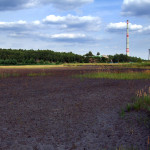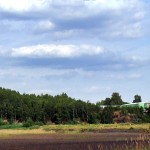 In the impoverished European landscapes, stone quarries, open mines, spoil heaps, sandpits, or fly ash deposits serve as crucial secondary refuges for various species of threatend habitats, such as steppe grasslands, bare sands, and open forests. Very often such post-industrial sites harbor many endangered organisms vanishing from our common landscapes. Recently, we have revealed fly ash deposits as one of the most important habitats for conservation of Central European biodiversity.
In the impoverished European landscapes, stone quarries, open mines, spoil heaps, sandpits, or fly ash deposits serve as crucial secondary refuges for various species of threatend habitats, such as steppe grasslands, bare sands, and open forests. Very often such post-industrial sites harbor many endangered organisms vanishing from our common landscapes. Recently, we have revealed fly ash deposits as one of the most important habitats for conservation of Central European biodiversity.  We have also repeatedly shown that commonly practiced technical reclamations cause local extinctions of the majority of such species and thus waste this tremendous conservation potential. We also study the effects of various environmental factors on the development of insect communities and their applicability during the efficient ecological restoration. Currently, we focus mainly on various finely-grained substrates, including fly ashes, and surprisingly overlooked post-industrial freshwater habitats.
We have also repeatedly shown that commonly practiced technical reclamations cause local extinctions of the majority of such species and thus waste this tremendous conservation potential. We also study the effects of various environmental factors on the development of insect communities and their applicability during the efficient ecological restoration. Currently, we focus mainly on various finely-grained substrates, including fly ashes, and surprisingly overlooked post-industrial freshwater habitats.
Key publications:
Tropek et al. 2010 Journal of Applied Ecology; Tropek et al. 2013 Biol. Conserv.; Tichanek & Tropek 2015 J. Insect Conserv.
English book with our contributions: Řehounková a kol. 2011. Near-natural restoration vs. technical reclamation of mining sites in the Czech republic.Calla, České Budějovice. (http://www.postindustrial.eu/en/knihy)
